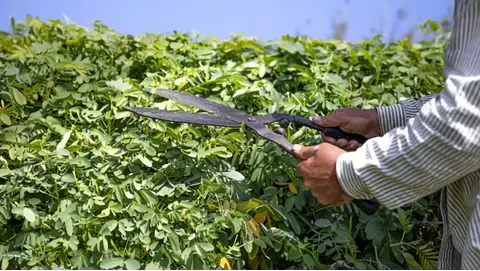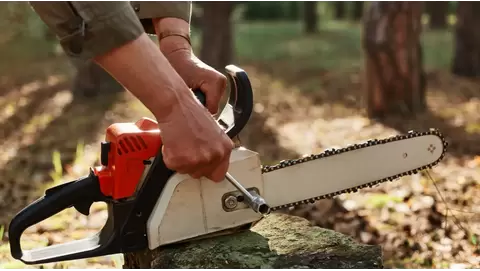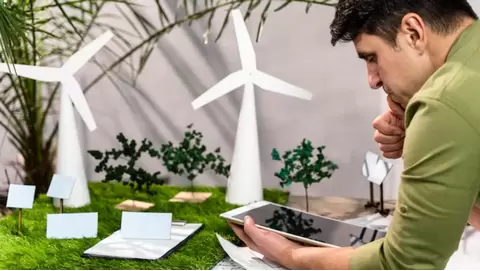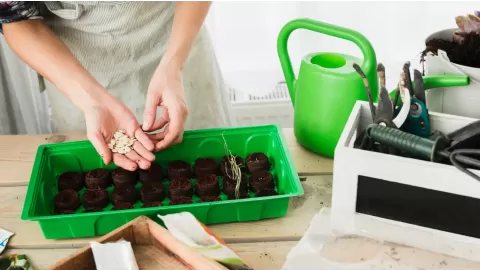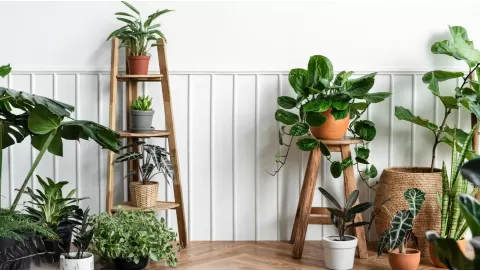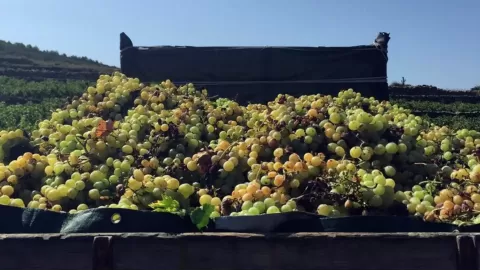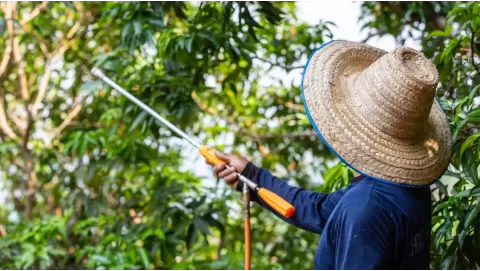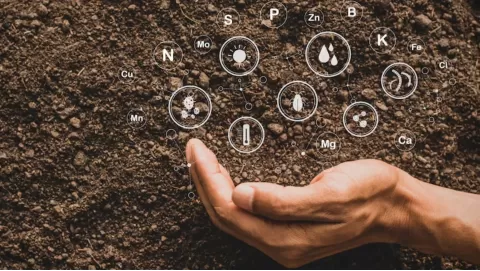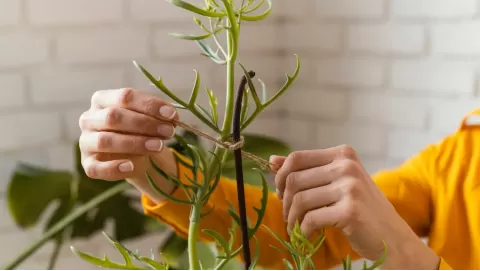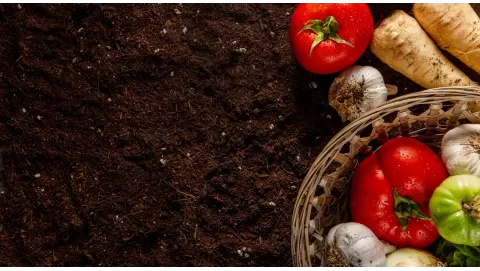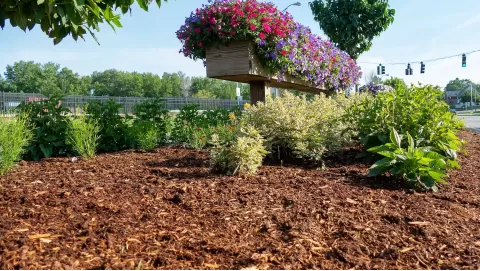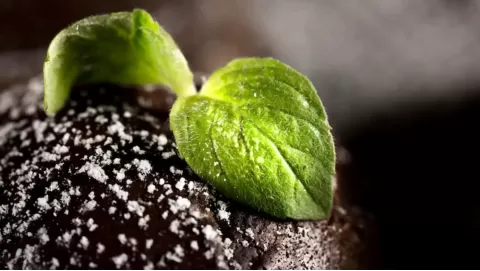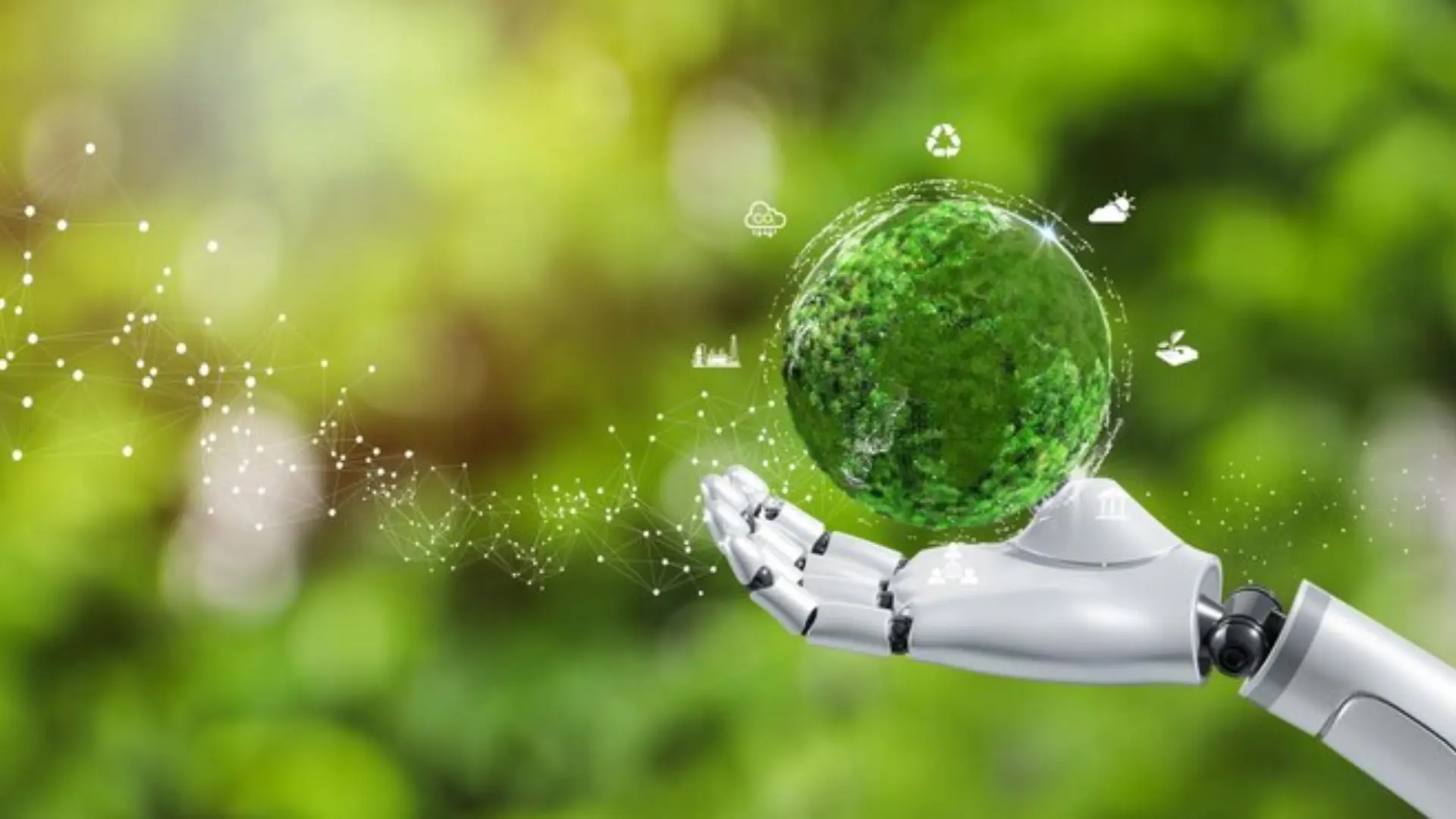
Advancing Smart Farming with Precision Robotics and Environmental Control
Modern agriculture has progressed from traditional tilling and irrigation techniques to a far more complex and technologically driven process on today’s high-efficiency farms. With global populations growing and the world’s natural resources under strain, the demand for intelligent, more sustainable farming products has never been greater. Smart farming is a concept that includes data-driven decision support systems and the use of automation and environmental control technologies in agriculture; it is today at the forefront of solving several critical food-related challenges, such as food security, labor shortages, and environmental sustainability.
- What: Smart farming combines precision robotics, environmental control systems, and air purifiers to maximize crop production, reduce waste, and minimize agriculture’s environmental impact.
- Ideal For: Indoor farmers, vertical farm managers, and growers aiming to boost productivity, lower labor costs, and improve crop quality using intelligent technology.
- Key Players:
- Gualala Robotics: Changing the way the world grows with tech that nurtures bigger, better, and healthier plants.
- Rhythm CSS: Specializes in integrated fertigation, climate control, and smart tech for precision farming.
- Greentech Environmental: Delivers advanced air purifiers to ensure clean air for crops and safe working conditions.
- Pro Tip: Combine robotics, environmental control, and air purification systems to increase yields, reduce resources, and streamline operations.
Among the most revolutionary is the advent of Controlled Environment Agriculture (CEA), in which every factor, from lighting to irrigation, is optimized using intelligent systems. Thanks to precision robotics and next-gen climate technologies, growers can now maximize yield, minimize waste, and ensure quality stays constant, no matter the weather outside.

This article explores how three pioneering companies Gualala Robotics Inc., Rhythm CSS, and Greentech Environmental are redefining the future of smart farming. Through innovative grow light movers, automated fertigation systems, and advanced air purification solutions, these companies are creating smarter, cleaner, and more resilient agricultural environments.
The Rise of Precision Robotics in Smart Farming
Smart farming isn’t just a trend; it’s a game-changer. Precise robotics is changing not only how to plant, monitor, and harvest crops but also the conditions in which they grow, particularly in controlled environments. Agriculture goes indoors and up, and environmental robotics allows growers to control and maintain the consistency they need to scale effectively.
No matter if you are overseeing a vertical farm or an indoor plant operation, the appropriate automation tools can be the difference between breaking even and breaking new ground. Be it portable lighting or robot irrigation, all of these technologies add to the efficiency, speed, and accuracy of daily operations.
The Role of Robotics in Controlled Environment Agriculture
Precision is key in Controlled Environment Agriculture. Robots give an edge by executing necessary functions with exact timing and consistency, every time. They remove guesswork and minimize the potential for human error.
For CEA, robotics is not simply convenient; it’s commanding. From how plants are bathed in light to how they’re fed and even how they’re given a breath of fresh air, robots help make sure every aspect of the grow environment is dialed in to perfection.
Labor Reduction
There are also high costs, spotty availability, and limits to manual labor. Accuracy robots step in to fill this role, tackling repetitive, time-consuming activities that used to require many hands.
Once robots are in place, growers can save labor costs, cut down on overtime, and shift human resources to more decision-making roles. Less bending, lifting, and tuning, more overseeing and optimizing.
Accuracy in Lighting, Irrigation, and Climate Adjustments
Repetition breeds error when it’s done by hand, but robots thrive on repetition. Whether it’s controlling lighting schedules, feeding nutrients, or controlling temperature and humidity, the robotic systems are accurate to the point with every use.
Growers can now enjoy not having to rely on memorizing or manually setting timers. Instead, robotics provides just the right spectrum of light, the exact milliliters of water, or the ideal CO₂ levels — all on time, all autonomously.
AI and Underwater Robotics for Sustainable Manufacturing
Artificial intelligence (AI) is transforming business operations — from factory floors and production lines to automated warehouses and logistics. With automation and AI-driven predictive analytics, manufacturers limit waste, enhance manufacturing processes, and realize superior resource utilization as they streamline production processes. The shift not only drives down costs, but it is also an important factor in environmental conservation.
These are the things the AI technologies help businesses do to make them capable of smarter decisions to reduce their environmental impact (whether it be through low-energy machinery or resource maximization). Moreover, underwater robots are being used for environmental monitoring and protecting underwater ecosystems, which helps contribute to a better understanding of the health of ocean bodies and a greater awareness in the field of environmental protection. These breakthrough solutions work together to deliver sustainable answers to take a balanced approach to industrial advancement and environmental stewardship.
Robotic Innovation in Light Movement: Gualala Robotics Inc
In the world of indoor cultivation, Gualala Robotics Inc. has earned its place as a trailblazer in light movement technology. The company was founded in 1986 outside Gualala, California, and is now based in Steamboat Springs, Colorado, where the LightRail is still the premium brand of light movers and the industry benchmark for indoor growing. These systems not only move lights, they change the spaces in which plants grow.
Unlike static lighting systems that create hot spots and throw shadowy pockets, LightRail systems follow the sun’s natural patterns of, yes, you guessed it, moving! This means that growers can place lights closer to their canopy with increased light intensity (Ppfd) while using fewer lights for the same industrial grow room area.
The result? Healthier plants, faster growth, and increased yields, all with fewer lights and less energy. Indeed, from 40% to 50% more area can be covered per grow light using only 5 watts of power with LightRail systems. That’s efficiency farmers can feel in their crops and in their utility bills.
Gualala Robotics’ lineup includes some of the most dependable light movers on the market:
- LightRail 3.5 IntelliDrive has adjustable 0 - 60 second time delay, so you can also control your grow light timing.
- LightRail 4.0 AdjustaDrive brings a variable speed of 2-4 feet per minute and a zero to 60-second time delay that is the perfect time delay drip solution to the customers.
- For larger operations or bigger lights, the LightRail 5.0 Side by Side system and the new RoboBar (patent pending) offer enhanced stability and movement for oversized LED grow lights.
What separates LightRail from the rest is not simply innovation — it's craftsmanship. Every part is manufactured in the USA with the smoothest finishes possible. These are not things you rent for a season or two, but long-term machines designed to keep running year after year of growing.
For cultivators who want to increase their productivity without expanding their electrical footprint, Gualala Robotics offers a simple but effective answer: move the light, and everything else will follow. More yield, less waste, and healthier, smarter indoor growing with LightRail.
Environmental Control as the Foundation of High-Tech Agriculture
Environmental control is no longer a luxury in agriculture; it’s now the life force for all of high-tech growing. From precision climate control to air filtration and humidity control, growers today depend on sophisticated units to reproduce the perfect environment for their crops, all year long.
In CEA, the power to control temperature, humidity, CO₂, and airflow is what makes the difference between great and just so-so harvests. It’s not just about comfort; it’s about control, consistency, and making things the best they can be.
Smart environmental controls can help to minimize resource wastage, improve crop quality, and stabilize output irrespective of external weather and geography. It’s the technology advantage on which modern agriculture can’t survive without.
Environmental Control: A Critical Piece in CEA
Precision is the name of the game when it comes to Controlled Environment Agriculture. And at the center of that precision is the environment.
Plant health, water, and yield potential are directly influenced by microclimate management—the ability to create and sustain the perfect growing conditions for each zone. A well-tuned microclimate leads to better-rooted plants, faster photosynthesis, and nutrient uptake.
With the help of tools like automated climate sensors, ventilation systems, and smart watering technology, growers can stop plant stress even before it begins. Every degree of heat or percentage point of humidity counts — and the controlled-environment agriculture systems allow you to optimize each one of them.
How Microclimate Management Affects Crop Health, Water Use, and Yield
Microclimates are more than just the air around your plants: they’re plant power zones. Subtle shifts in airflow or moisture can make all the difference to how a plant grows.
Good environmental control provides uniform coverage, there are no localized hot spots or wet spots, and evapotranspiration is uniform. This leads to:
- Healthier, uniform crops with fewer deformities or deficiencies
- More efficient water usage, reducing waste and runoff
- Significantly improved yields through optimized growing cycles
Precision pays off—literally—when every square foot of a grow room performs at its peak.
Environmental Control and Fertigation: Rhythm CSS
Rhythm Cultivation Solutions and Services delivers a new standard in cultivation precision. Created by industry veterans in industrial automation and commercial agriculture, Rhythm CSS pairs durable fertigation delivery systems with sophisticated environmental control and intuitive software.
Key features of Rhythm’s fertigation and control systems include:
- Versatile system models: Choose from Inline Injection, Single Batch, Multi-Batch, Day Storage, and Recirculation Series.
- Custom designs: Skid-built or wall-mounted configurations to your facility’s footprint.
- Precision control: Integrated VFD-controlled pumping and high-accuracy nutrient injection.
- Comprehensive solutions: Control irrigation and nutrition provisions as well as environmental hazards, all under one platform.
All pieces and assemblies are designed to increase efficiency, lessen labor, and ensure consistent harvesting quality control, regardless of growing style.
Air Quality and Sustainable Growth with Innovative Purification
In modern cultivation, the issue isn’t just comfort; it’s survival. The air that moves through your grow will play a key role in the health of plants, your ability to achieve consistent yields, and the overall well-being of your team. Revolutionary air purification solutions are changing how doors clean grow room air for optimum sustainability and production.
Through removing toxic contaminants and airborne pathogens, these systems set the foundation for more sustainable, high-yielding harvests, while eliminating the need to lean as heavily on harmful chemicals.
Sustainable and Safe Growing Environments
Cleaner air leads to cleaner growing. State-of-the-art air purification technology destroys mold spores, bacteria, and even volatile organic compounds (VOCs) before they become problematic. The system is developing to the point where the use of chemical sprays and reactive interventions becomes a thing of the past as the grower is able to move towards a more natural and preventive approach, ultimately.
The upside isn’t all about the plants. Workers can also breathe more easily — or literally. Better indoor air quality means better respiratory health, fewer long-term exposure risks, and a safer, more worry-free workplace.
Key benefits of purified airflow include:
- Reduced chemical treatments and crop residue
- Lower hourly cost of labor for mold or pest prevention
- A healthier working environment for your team of growers
- Higher adherence to indoor air safety standards
Production of high-value crops and medicinal plants is sensitive to contamination and should follow a zero-tolerance rule. Whether you are cultivating leafy greens or pharmaceutical-grade botanicals, a clean, filtered air flow protects the purity of your harvest.
High-efficiency filtration and intelligent ventilation strategies can be used together to ensure that there are no contaminants in a newly constructed facility where fragile plants are growing, from seed to sale.
Greentech Environmental: Clean Air for Healthier Crops
Urban indoor agriculture requires more than just light and nutrients — it also needs clean, high-quality air. That’s where Greentech Environmental comes in. Their revolutionary air filtration and purification technology raises the bar in grow-room health, productivity, and sustainability.
Greentech’s dual-action filter is the keystone of the solution, which combines nanofiber material with their patented ODOGard technology. Combined with the two technologies, hazardous particles and difficult odors are removed on the molecular level.
The Science Behind the Smartest Filter
Greentech filters are not only made better – they’re made smarter. No loss of filtration efficiency over the service life of the filter as can be common with pleated type filters.
What makes them stand out:
- Dual-function filtration: Captures particulates and gas-phase elements in one filter
- Nanofiber material: 400x smaller than a human hair for ultra-fine filtration
- Consistent MERV rating: True mechanical media, no reliance on electrostatic charge capture, which can diminish over time
- Low pressure drop: Allows your HVAC system to work at its most efficient.
- No internal bypass: All air goes through the filter media
The Future of Smart Farming is Integrated and Automated
The face of agriculture is changing quickly through smart farming. By integrating state-of-the-art technology into streamlined systems, farms can become more efficient, sustainable, and profitable. Robotization, climate conditioning, and air purification are critical components that synergize to optimize your process and increase the output results.
When all of these technologies are taken together, they form a whole farm approach to farming. The disjointed operations of farms have been integrated, so lighting, irrigation, and climate can all work together in real time.
Farm management is made precise through the help of smart systems, which minimize errors that could result from human handling and allow operators to rely on actual data for decision making. The way forward is evident: integrated, automated farming systems will define the new era of farming.
Robotics, Climate Control, and Purification
When robotics, climate control, and their air purification systems are combined, the farm is working at its maximum capacity. Each of them has something special, but together, they build an atmosphere in which the plants flourish, and labor costs are low.
Why this synergy is a game-changer:
- Robotics: Automate repetitive jobs, such as planting, harvesting, and maintenance, to free up time for more hands-on strategic work.
- Climate Control: Automatically control temperature, humidity, and CO2, so your plants are always thriving no matter what weather is outside.
- Air Purification: Clean the air to avoid illnesses, and live healthier—featuring sophisticated filtration and purification, working to keep the air clean for you.
Through integrating these technologies, it is possible to optimize the operations in the farms, but also to ensure product quality. The two systems feed each other, forming a self-perpetuating ecosystem that minimizes waste and maximizes yields.
Integrated Farm Systems for Commercial-Scale Growers
Commercial-scale growers are increasingly adopting integrated farm systems to enhance their operations. Not only do these systems drive productivity, but they also offer data-driven intelligence that helps run all elements of the farm.
Examples include:
| Feature | Benefit |
|---|---|
| Automated Lighting and Irrigation Systems | Synchronize light cycles with fertigation schedules to deliver optimal nutrient and light levels for plant growth. |
| Robotic Harvesting Systems | Operate continuously, reduce labor costs, and accelerate the harvesting process. |
| Integrated Environmental Controls | Maintain ideal growing conditions by automating temperature, humidity, and CO2 levels based on sensor data. |
These connected systems give growers the transparency and control they need to make better decisions and get better results.
Building a Scalable, Resilient, Growing Operation
Following the trends of other industries, as automation takes a stronger hold on agriculture, creating scalable and resilient operations is of great importance. Smart farming systems don’t just reduce the cost and effort of farming; they also minimize the impact on the environment and let businesses scale sustainably without compromising on quality or yield.

Cost-savings through automation: Even if the operative hour rates can be the same, the cost of operation is much less due to automated systems, so costs are already lower and then operations spending has a very high productivity level. It features automated lighting and irrigation, as well as fertigation, all managed on a tight schedule to avoid waste and maximize resource use.
Scalability: Combined systems are simple to scale up as the business grows. A flexible infrastructure allows farms to expand their operations without replacing the entire system. The automation gear scales with the business to support larger facilities and more sophisticated needs.
Sustainability: Automation saves resources like water and energy, facilitating farms’ compliance with sustainability standards. Through waste reduction and efficiency increases, these farms not only reduce costs but also have a reduced impact on the environment.
Incorporating automated solutions is the key to creating a resilient, scalable farm. Automation will bring you the equipment to supply this need for high-quality equipment, and there will be greater demand for it.
FAQs
1. How does precision robotics improve crop yields in controlled environments? Efficient robotics can increase crop yields by maximizing every aspect of the growth process, including light, water, and nutrients. Robots, by making lighting adjustments, managing irrigation and fertigation systems, are able to make sure the right things are happening to the plants at the right time, not two hours too early or late, and things don’t grow quite right. This leads to healthier plants that grow faster and produce more.
2. What is Controlled Environment Agriculture, and how does it benefit growers?
Controlled Environment Agriculture is the production of crops in a controlled environment, usually indoors, where all aspects of the environment, including light, temperature, humidity, and CO2 level, can be manipulated to optimize plant health and growth. This method does not depend on inclement weather, and thus, year-round efficient production is obtained. It cuts down on resources (waste), improves the uniformity of the crop, and is better for the environment as you don’t need as many pesticides/herbicides.
3. How does air purification impact indoor farming?
Air purification is critical to a productive and healthy environment. Air purification systems clean out undesirables such as mold spores, bacteria, and VOCs, which prevents sickness and promotes healthier crops. Clean air is also a win for employees because it helps them avoid potential respiratory hazards, creates safer working environments, and provides for better yields and a more efficient growing operation in the long run.
Conclusion
Precision robotics, climate control, and air purification will help feed the world in the future. Enter companies such as Gualala Robotics Inc., Rhythm CSS, and Greentech Environmental that infuse new technology into the management of crops in order to drive agriculture productivity and profitability. These developments make precision lighting, automated fertigation, and ultramodern air purification affordable and contribute to the optimized crop yield and resource efficiency.
As smart farming practices develop, the use of automation and intelligent systems becomes an essential tool to enhance productivity while minimizing waste and providing healthier and greener agricultural settings. The integration of robotics, climate control, and air sanitation technologies, being made possible by companies such as Gualala Robotics, Rhythm CSS, and Greentech Environmental, will usher in an era of farming that is more sustainable, efficient, and responsive to the environmental challenges of the time.
Disclaimer: This material is for informational purposes only and should not be relied on for legal, medical, financial, or other professional advice.
Sources:
Research Gate - Smart Farming: Automation and Robotics in Agriculture
Smart Water Magazine - The future of water treatment: Innovations and sustainable solutions






